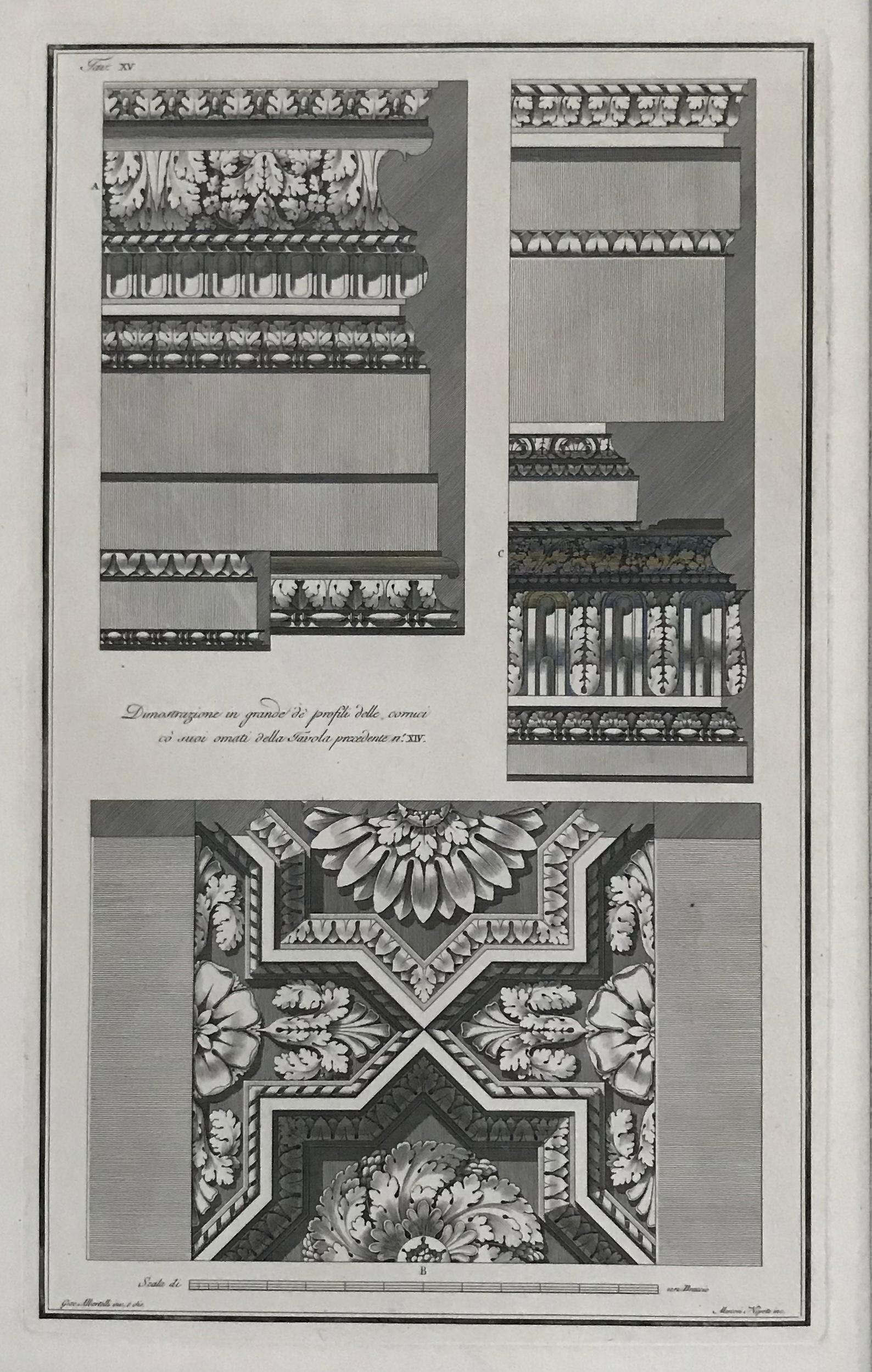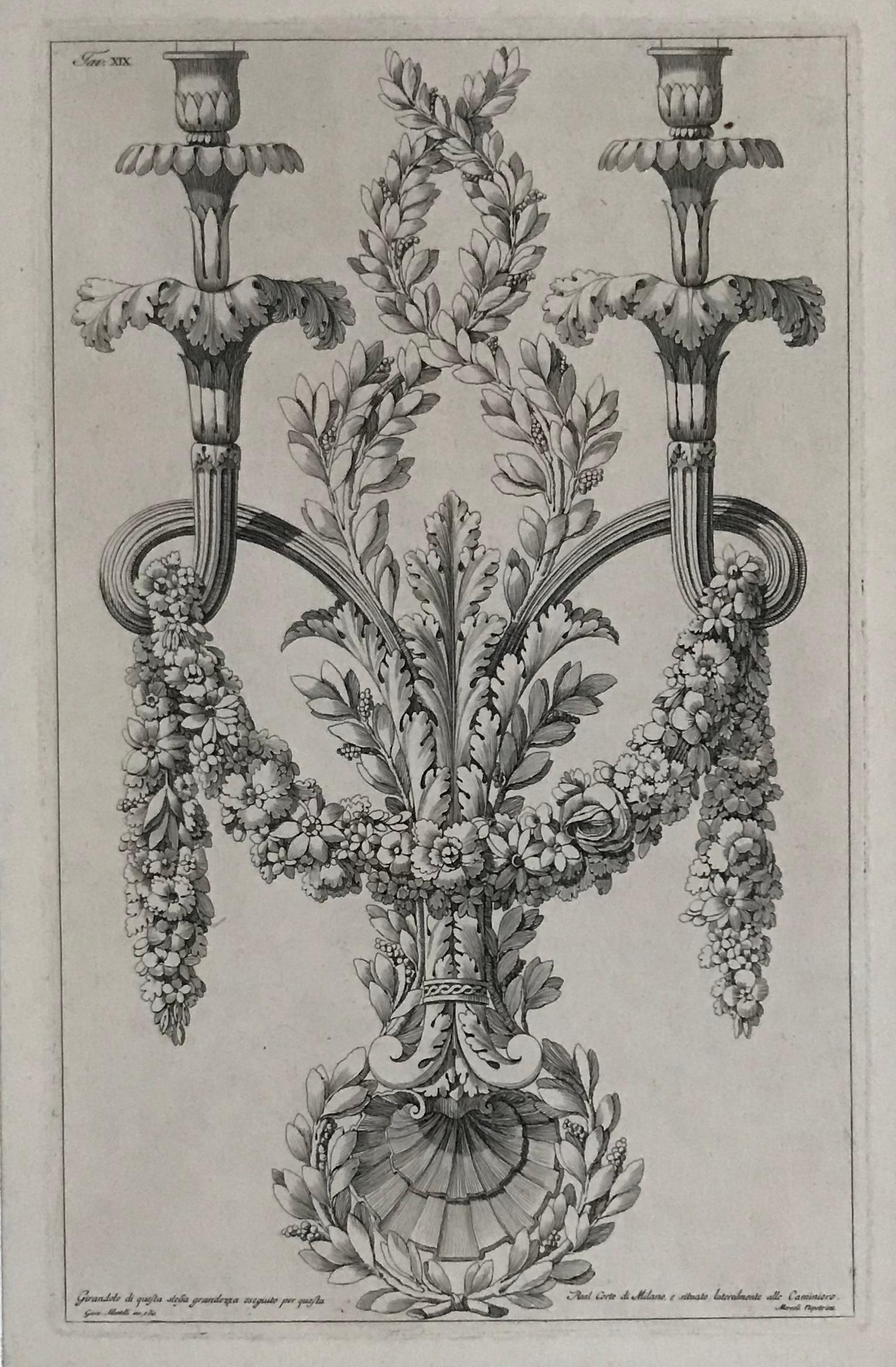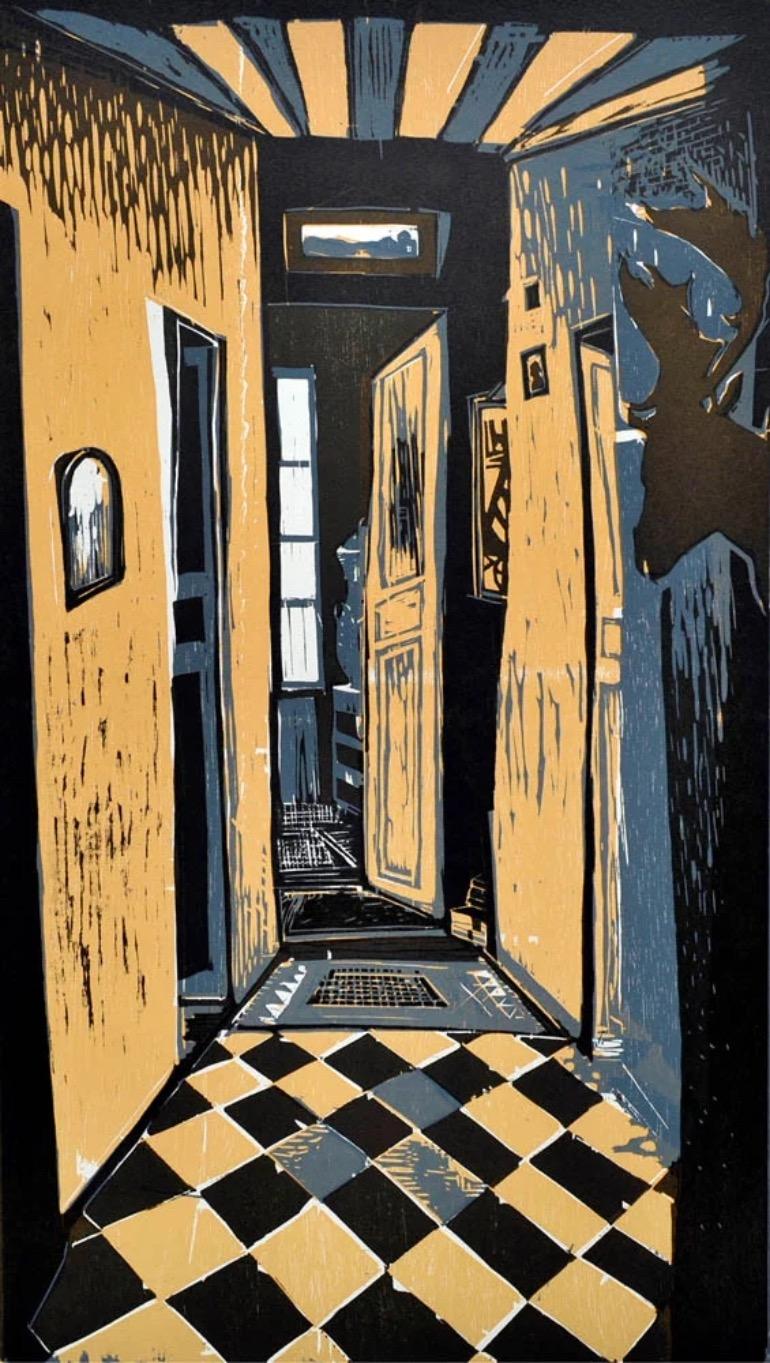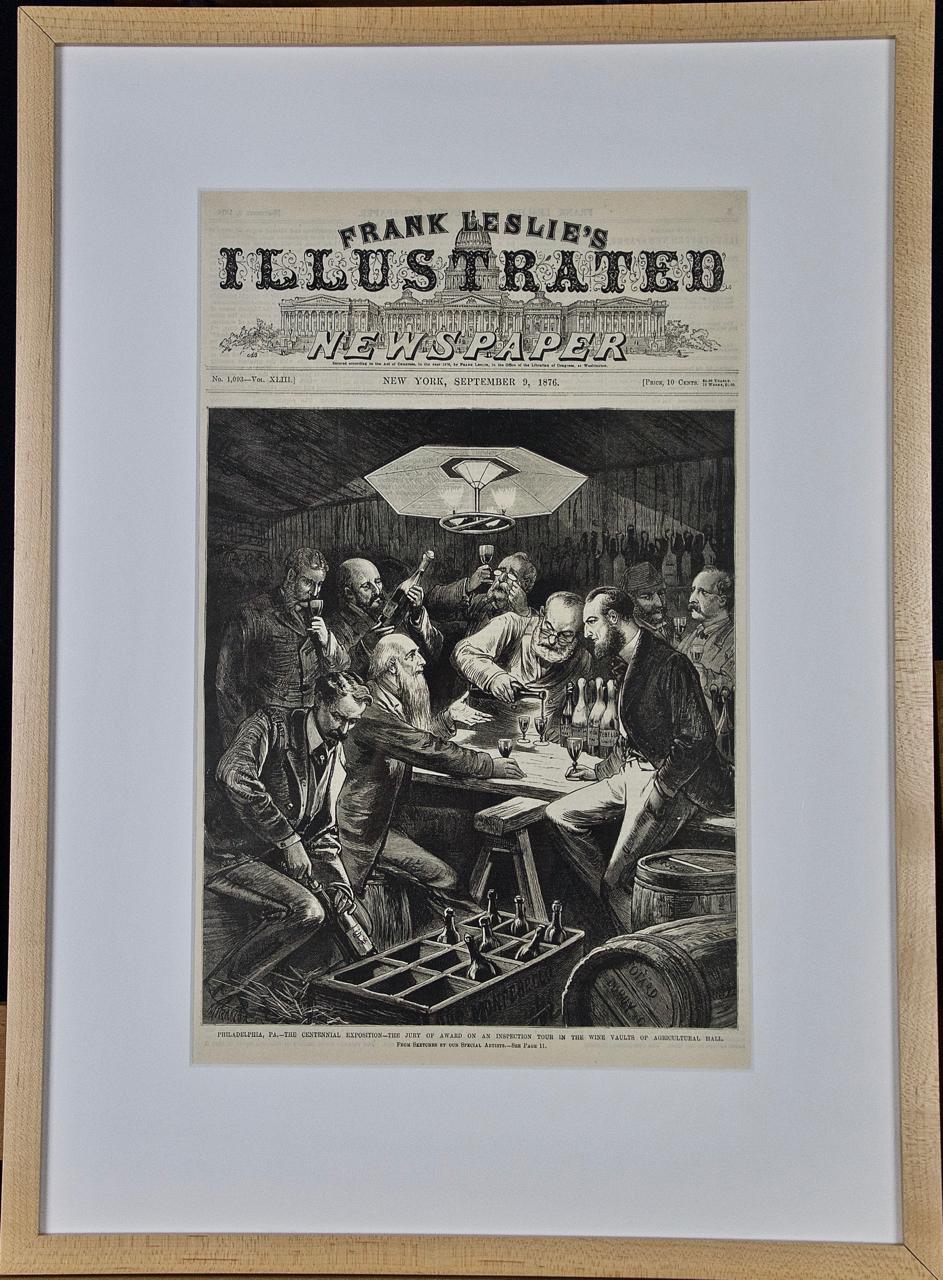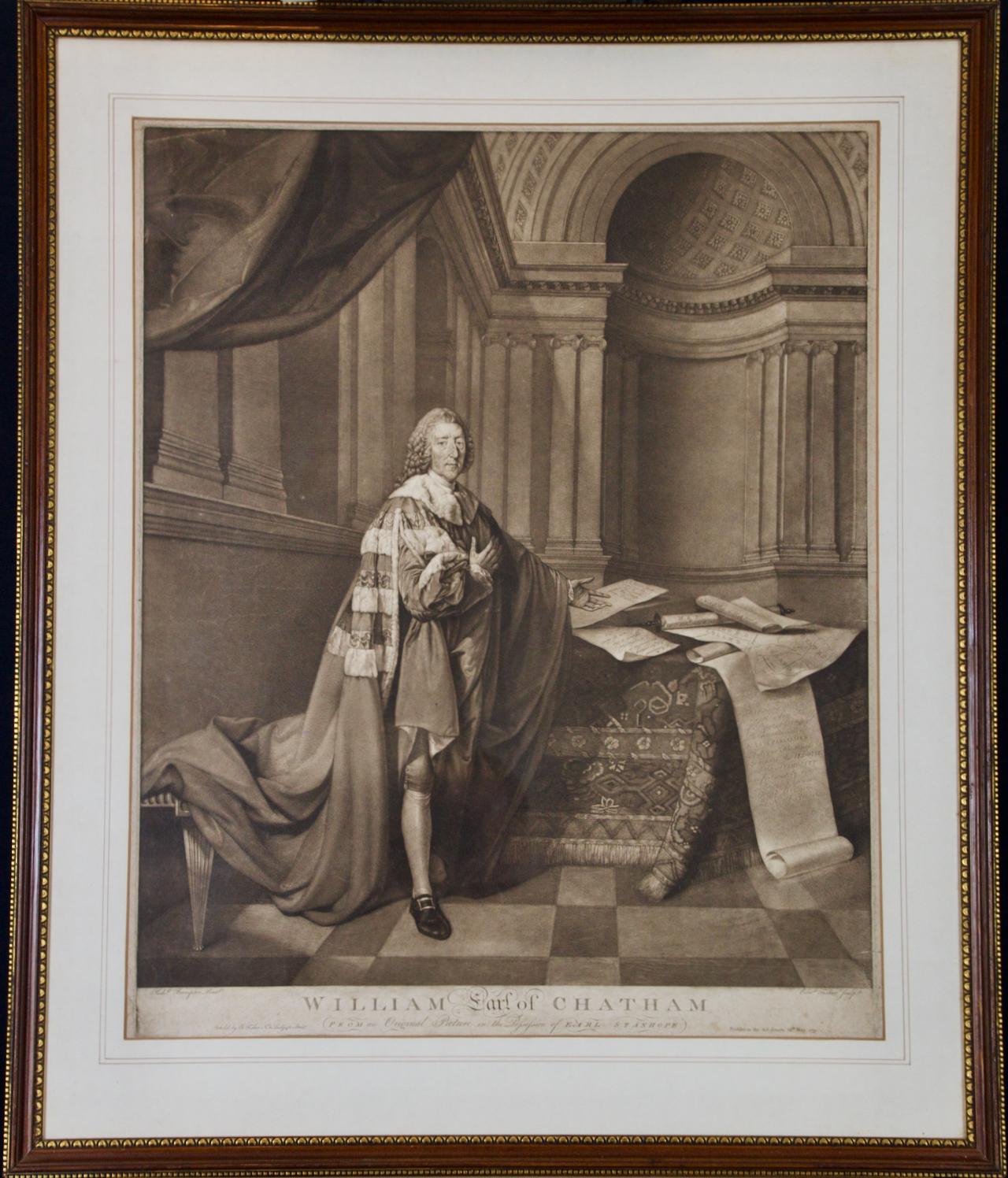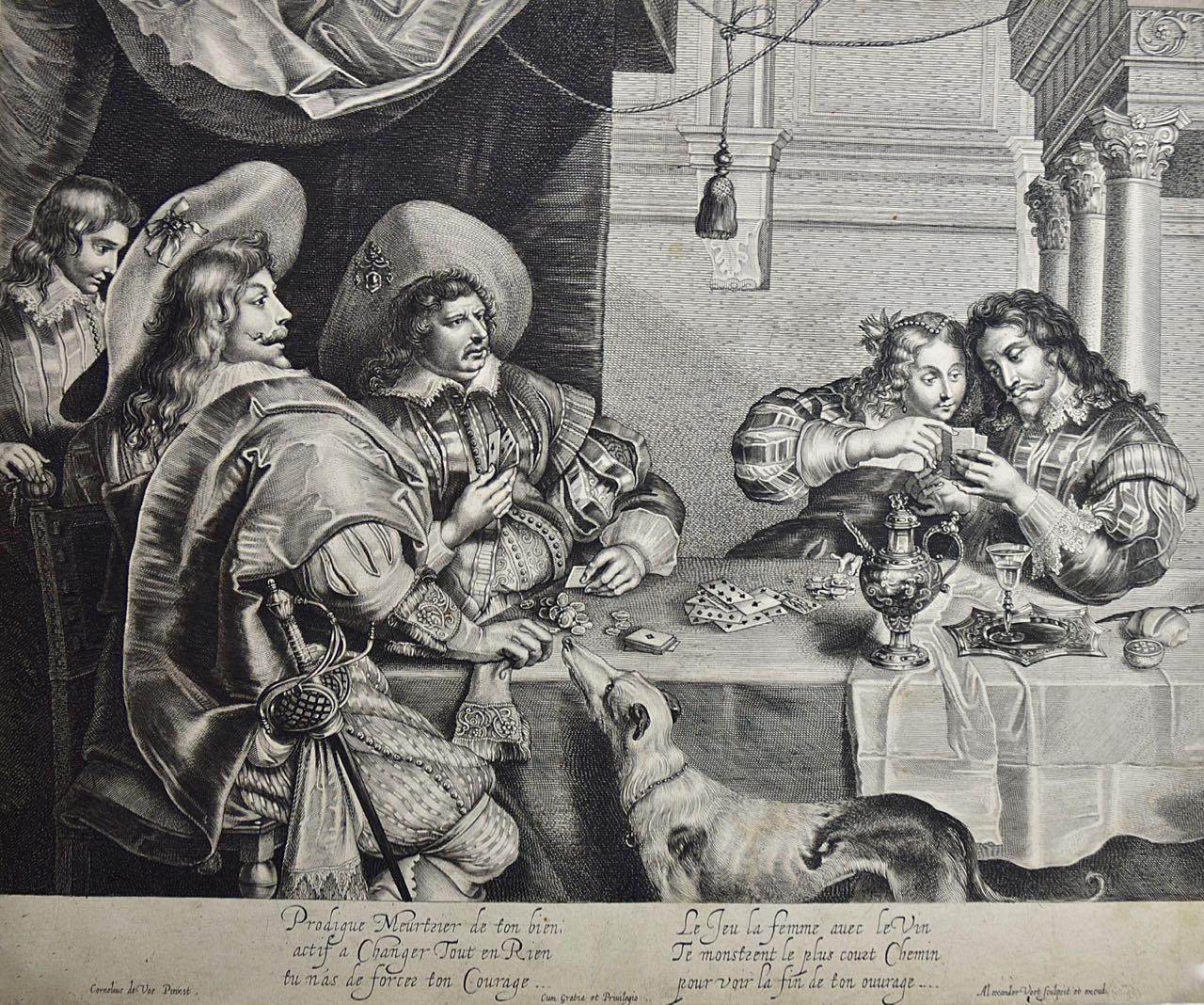Items Similar to Allegory of the four seasons. Four engravings on two framed sheets.
Want more images or videos?
Request additional images or videos from the seller
1 of 9
Albertolli GiacondoAllegory of the four seasons. Four engravings on two framed sheets.1782
1782
About the Item
Allegory of the four seasons. A pair of engravings.
These engravings are framed in white gold covered french frames.
From the publication published in Milan in 1782.
"Different ornaments, invented, designed and executed by Giocondo Albertolli " (1742-1839) Swiss-Italian architect and decorator. Giocondo Albertolli became famous for the ornamental decorations he executed in the interiors of public and private buildings in Lombardy. It represented the neoclassical style born around 1770, which due to its reaction to the baroque and the rococo was inspired by the rather austere and linear forms of the ancient Greeks and Romans. Later he was a highly regarded teacher at the Academy of Fine Arts, in Milan (better known in the abbreviated form Brera), of which he was a co-founder.
- Creator:Albertolli Giacondo (1742 - 1839, Italian)
- Creation Year:1782
- Dimensions:Height: 15.75 in (40 cm)Width: 11.82 in (30 cm)
- Medium:
- Period:1780-1789
- Condition:
- Gallery Location:Paris, FR
- Reference Number:1stDibs: LU129225385811
About the Seller
5.0
Vetted Seller
These experienced sellers undergo a comprehensive evaluation by our team of in-house experts.
Established in 2015
1stDibs seller since 2019
31 sales on 1stDibs
Typical response time: Several days
- ShippingRetrieving quote...Ships From: Paris, France
- Return PolicyA return for this item may be initiated within 14 days of delivery.
More From This SellerView All
- Architectural designs. A set of nine architectural engravings.By Albertolli GiacondoLocated in Paris, FRArchitectural designs. A set of nine architectural engravings. These engravings are framed in white gold covered french frames. From the publication published in Milan in 1782. "Diff...Category
1780s Interior Prints
MaterialsEngraving
- Chandelier designs. A pair of engravingsBy Albertolli GiacondoLocated in Paris, FRChandelier designs. A pair of architectural engravings. These engravings are framed in white gold covered french frames. From the publication published in Milan in 1782. "Different o...Category
1780s Interior Prints
MaterialsEngraving
- Ceiling designs. A set of three architectural engravings.By Albertolli GiacondoLocated in Paris, FRCeiling designs. A set of three architectural engravings. These engravings are framed in white gold covered french frames. From the publication publishe...Category
1780s Interior Prints
MaterialsEngraving
- Rhodotorulic Acid. Woodcut in colors. Signed.By Damien HirstLocated in Paris, FRHIRST Damien (1965 - ) Rhodotorulic Acid. Woodcut in colors. Signed. Provenance : DTR Modern Gallery, New York. About Damien Hirst (Artist) British artist Damien Hirst is widely considered the enfant terrible of contemporary art. He is the most prominent of the so-called Young British Artists, or YBAs, a group, largely composed of Hirst’s classmates at Goldsmiths, in London, that began exhibiting together in warehouses and factories after 1988 and is known for the use of unconventional materials and “shock tactics.” In the 1990s, Hirst said, “I can’t wait to get into a position to make really bad art and get away with it.” And indeed, he is notorious for piquing critics and baffling the public with such pieces as his signature glass vitrines containing dead sheep or sharks in formaldehyde, and his diamond-encrusted skull, For the Love of God. Working primarily in sculpture, Hirst takes after French modernist master Marcel Duchamp in his use of ready-made objects and materials, which he combines to ironic effect. He often creates in series, as with The Cure (Violet) and The Cure (Turquoise), both from 2014, which are among several pill paintings...Category
2010s Abstract Abstract Prints
MaterialsPaper
- 'Tree of life'. Coloured lithograph. Signed, titled, dated and numbered EA 1/5By Guillaume Cornelis van Beverloo (Corneille)Located in Paris, FR'Tree of life''. Coloured lithograph. Signed, titled, dated and numbered EA 1/5 This piece is accompanied with a certificate of authencity by the Corneille Foundation. Corneille – G...Category
1990s Other Art Style Figurative Prints
MaterialsLithograph
- HUBER Johann Kaspar. View of a city thought to be Antwerp. Wasked ink.By HUBER JOHANN KASPARLocated in Paris, FRJohann Kaspar HUBER is a Swiss painter.Category
Late 18th Century Landscape Drawings and Watercolors
MaterialsInk
You May Also Like
- Intérieur bois ILocated in PARIS, FRIt is certainly the most appropriate translation of Pascale Hémery’s work, which takes a look at the places visited on a daily basis and during her travels abroad. This look is the s...Category
21st Century and Contemporary Contemporary Interior Prints
MaterialsEngraving
- "Inspection Tour in the Wine Vaults", 1876 Philadelphia Centennial ExpositionLocated in Alamo, CAThis engraving is entitled "Philadelphia, PA- The Centennial Exposition - the Jury of Award on an Inspection Tour in the Wine Vaults of Agricultural Hall", ...Category
Late 19th Century Naturalistic Interior Prints
MaterialsEngraving
- Portrait of William Pitt, Earl of Chatham: Rare Framed Mezzotint after BromptonBy Edward FisherLocated in Alamo, CAThis is a large framed very rare hand-colored copperplate mezzotint engraved portrait of William Pitt, the Elder, 1st Earl of Chatham by Edward Fisher, published in London in 1779 after a painting by Richard Brompton. Pitt is depicted attired in a flowing regal appearing cape, standing in an ornate room with his left hand outstretched over a serious of manuscripts and scrolls that are laying on a table or desk to his left. The table is covered by a beautiful oriental carpet. The manuscripts include the Magna Carta, a map of the colonies, including Long Island and Staten Island, and papers entitled "A Plan for the Reconciliation between Great Britain and the Colonies", "A Motion Made in 1775 for the Recall of Troops from Boston", "A Provisional Act for Settling the Troubles in America Offered to the House of Lords in 1775", and "It is doing Nothing to repeal a few Scraps of Paper or Pieces of Parchment called Acts of Parliament. But our Business is to repeal the Ill-Will and the Animosity unfortunately now subsisting between Great Britain and North America". This engraving is held by the British Museum and the British Royal Collection Trust. This large framed mezzotint engraving is presented in a brown wood frame with gold-colored beaded inner and outer trim, and a cream-colored French mat. The frame measures 31.63" high by 26.63" wide by 0.75" deep. There are three short tears along the right edge and mild creasing in the left upper, left lower and right lower corners. It is otherwise in very good condition. William Pitt (1708-1778) was a member of the British parliament from 1735 to 1761 and prime minister from 1766 to 1768. Pitt was an advocate for the American colonies leading up to the War of Independence. He called for an amiable relationship between Great Britain and the colonies and opposed the Stamp Act and military action in America. He advocated for a withdrawal of English troops from Boston in 1775 and the settling of troubles in America, as two of his manuscripts on the table outline. Pitt's colleague, Lord Shelburne (later the Marquess of Lansdowne) shared his sympathies and after Pitt's death, signed a peace treaty with the United States in 1782. The American city of Pittsburgh, Pennsylvania is named for William Pitt, the Elder. The name originated when the conflict between the British and French over territorial claims in the Northeast were settled in 1758. General John Forbes and his British army, supported by the American colonial troops, expelled the French from Fort Duquesne (which had been constructed by the French in 1754). Forbes re-named the site for William Pitt the Elder, who at the time was a British statesman. The earliest known reference to the new name, Pittsburgh, is in a letter sent from General John Forbes to Pitt, dated November 27, 1758. Pitt's son, William Pitt, the Younger, like his father, also served as British Prime Minister. Edward Fisher (1730-1785) was born in Ireland in 1730. He was originally a hatter, but learned engraving in London. He became a member of the Incorporated Society of Artists in 1766, and exhibited there fourteen times between 1761 and 1776. He engraved more than sixty portraits. In addition to this portrait of William Pitt, Earl of Chatham, after Richard Brompton he engraved several portraits after Brompton, including George, Earl of Albemarle, as well as engraved portraits after paintings by Joshua Reynolds, including the Shakespearean actor David Garrick, Hugh, Earl of Northumberland, and Elizabeth, Countess of Northumberland and Laurence Sterne, and Hope Nursing Love, as well as Robert Brown, after Mason Chamberlin, Colley Cibber, after Jean-Baptiste van Loo, Christian VII of Denmark, after Nathaniel Dance, Simon, Earl Harcourt, after Hunter, Roger Long, after Benjamin Wilson...Category
Late 18th Century Old Masters Portrait Prints
MaterialsMezzotint
- The Card Game: An Early 17th Century Engraving by A. Voet after Cornelis de VosBy Alexander VoetLocated in Alamo, CAA 17th century engraving entitled "The Card Game" by old master artist Alexander de Voet after a painting by Cornelis de Vos, created in 1632. The pain...Category
1630s Old Masters Interior Prints
MaterialsEngraving
- Marquis de Marigny: An 18th C. Wille Engraved Portrait after a Tocque PaintingBy Louis TocquéLocated in Alamo, CAThis is a mid 18th century engraved portrait of Abel François Poisson de Vandières, Marquis de Marigny by Jean Georges Wille after a painting by Louis Tocque...Category
Mid-18th Century Portrait Prints
MaterialsEngraving
- N. Lambert Seigneur de Thorigny: 17th C. Engraved Portrait After LargillièreBy Nicolas de LargillièreLocated in Alamo, CAThis is a 17th century engraving entitled "Messire Nicolas Lambert Seigneur de Thorigny, Conseiller du Roy" by Pierre Drevet after a painting by Noicolas de Largillière, published in Paris in 1698. This portrait depicts a three-quarter length view of Nicolas Lambert de Thorigny, who is dressed in elaborate robes and collar of a wealthy Parisian nobleman of the time. He is seated directed to the left and looking directly at the viewer. He is holding an inscribed note in his right hand. A magnificent billowing curtain is in the background. Lambert's coat of arms is shown in the center of the lower inscription area. In the inscription area is lettered with title, production detail: "Nic. Largilliere pinxit" and "Petr. Drevet sculpsit", and publication detail: "Se vend a Paris chez Drevet rüe du Foin au coin du College de Maître Gervais". Nicolas Lambert, Seigneur de Thorigny (1600-1664), was a French nobleman and military commander who lived in the 17th century. He served in the French army during the Thirty Years' War, a conflict that took place from 1618 to 1648 and involved many European powers. Lambert fought in several battles during the war and rose to the rank of colonel. After the war, Lambert returned to France and became involved in politics. He served as a member of the Estates General, a legislative body that advised the king, and as a governor of several provinces. He was a counsellor and confidant of King Louis XIV. He had the title of Président de la Chambre des Comptes. He also became a member of the French Academy of Sciences, a prestigious institution that promotes scientific research and scholarship. Lambert was known for his military expertise, his intelligence, and his commitment to public service. He iInherited the Hôtel Lambert in Paris from his brother Jean Baptiste in 1644 and hired some of the most prominent artists of the time, including Charles Le Brun to decorate and furnish the building. This beautiful old master engraving was created with impressive detailed technique. It is printed on laid, chain-linked paper. The sheet measures 18.5" high and 13.38" wide. The sheet is adhered to an archival backing paper at the top. There is a faint horizontal center fold and mild discoloration in the inscription area and in the upper margin on the right, with mild wrinkling here. The print is otherwise in very good condition, considering its age. This engraving is so rare, that no comparable prints could be identified for sale online. It is currently only listed in museum collections, including: The Metropolitan Museum of Art, The British Museum, The Louvre, The Riksmuseum, The Victoria & Albert Museum, The Fitzwilliam Museum at the U. of Cambridge, The Boston Museum of Fine Arts, Harvard Art Museums, The Finnish National Museum, The Philadelphia Museum. It is shown in the Metropolitan Museum's Cataloque of French paintings entitled: "French Paintings in The Metropolitan Museum of Art, published in 2018, page 36. The page is included in the photos. Nicolas de Largillière (1656-1746) was a French portrait painter who achieved great success and acclaim during the late Baroque and Rococo periods. He was born in Paris and trained under the painter Antoine Goubeau. He studied in Antwerp and London before returning to France. While in England he was a favorite painter of King Charles II and King James II of England...Category
Late 17th Century Portrait Prints
MaterialsEngraving
Recently Viewed
View AllMore Ways To Browse
Four Antique
Four Framed
Antique Interior Decorations
Antique French Interior Design
Greek And Roman
Antique White Interior
Baroque Interior
Four Engravings
Roman Engravings
Antique French Sheets
Neoclassical Engraving
Pair Engravings
Pair Of Engravings
Pair Of French Prints
Framed Art Neoclassical
French Allegory
Engraving Greek
Engravings Greece
